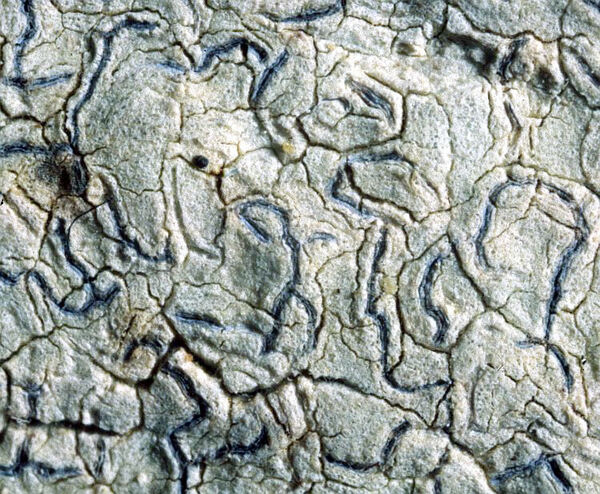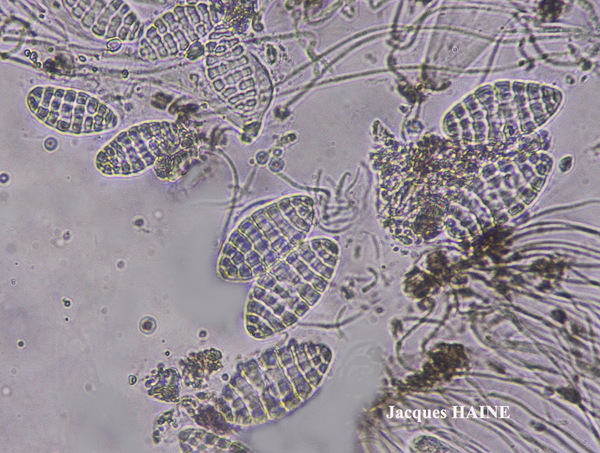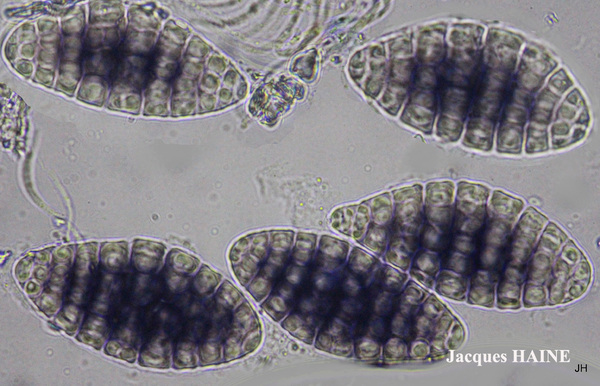Graphis inustuloides Lücking
in Lücking & McCune, Evansia, 9: 78, 2012.
Synonyms: Graphina anguina auct. eur. non (Mont.) Müll. Arg.; Graphis britannica Staiger; Graphis inustula Nyl. non Stirt.; Thalloloma anguinum auct. non (Mont.) Trevis.; Ustalia anguina auct. eur. non Mont.
Distribution: N - Lomb.
Description: Thallus crustose, thinly episubstratic, white, yellowish white or pale grey, continuous or finely rimose. Apothecia lirelliform, black, often surrounded by a thin thalline rim, 1-3(-5) x 0.2-0.3(-0.5) mm, slightly emergent but largely immersed in the thallus, simple or branched and star-shaped, acute at ends, with a narrow, slit-like to slightly expanded and then white-pruinose disc, and a c. 0.1 mm thick, raised, usually epruinose, not furrowed proper margin. Proper exciple black in upper part, brown to colourless in lower part, 25-50 μm wide, not extending below the hymenium; epithecium pale brown; hymenium colourless, up to 120 μm high, I-; hypothecium thin, colourless. Asci 8-spored, cylindrical-clavate, non fissitunicate, dehiscent by an apical split, K/I-, Graphis-type. Ascospores muriform, hyaline, broadly ellipsoid, (20-)30-60(-70) x (9-)12-16(-20) µm, the wall I+ blue. Pycnidia black, immersed. Conidia ellipsoid, hyaline, 6-9 x 2-3 µm. Photobiont trentepohlioid. Spot tests: thallus K-, C-, KC-, P-, UV-. Chemistry: without lichen substances.
Note: a mild-temperate to tropical species found on smooth bark, perhaps extinct in Italy. The only Italian record, furthermore, is old and somehow dubious (see Nimis 1993: 304-305).
Growth form: Crustose
Substrata: bark
Photobiont: Trentepohlia
Reproductive strategy: mainly sexual
Most common in areas with a humid-warm climate (e.g. most of Tyrrenian Italy)
Commonnes-rarity: (info)
Alpine belt: absent
Subalpine belt: absent
Oromediterranean belt: absent
Montane belt: absent
Submediterranean belt: extremely rare
Padanian area: absent
Humid submediterranean belt: absent
Humid mediterranean belt: absent
Dry mediterranean belt: absent

Predictive model
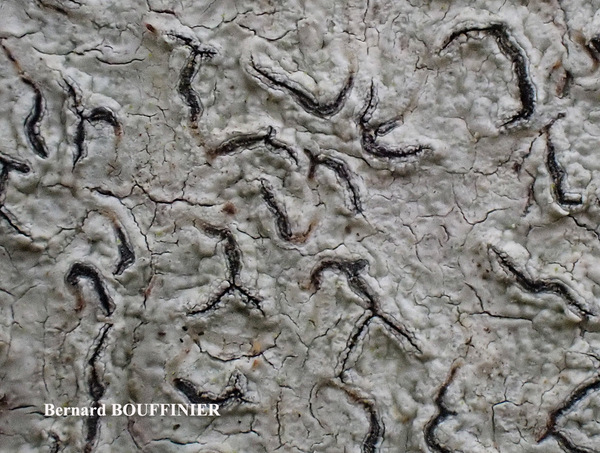
Bernard Bouffinier - Source: http://www.lichensmaritimes.org/index.php?task=fiche&lichen=585&lang=en
France, Roscanvel
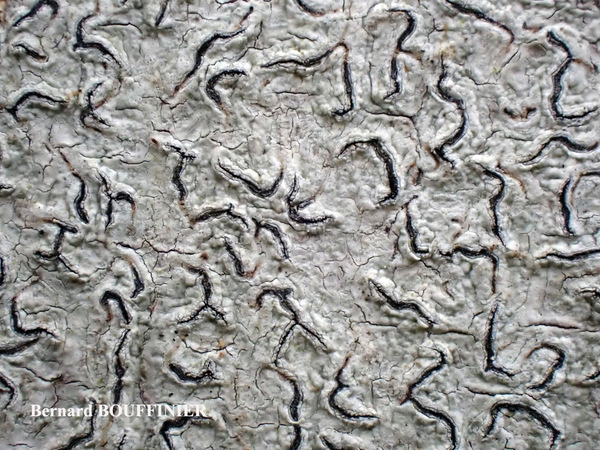
Bernard Bouffinier - Source: http://www.lichensmaritimes.org/index.php?task=fiche&lichen=585&lang=en
France, Roscanvel
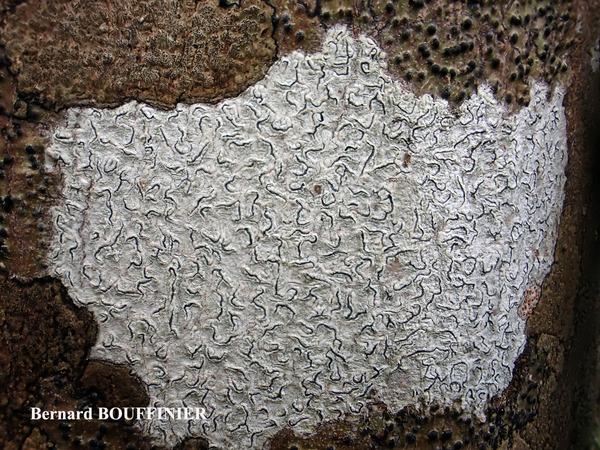
Bernard Bouffinier - Source: http://www.lichensmaritimes.org/index.php?task=fiche&lichen=585&lang=en
France, Roscanvel
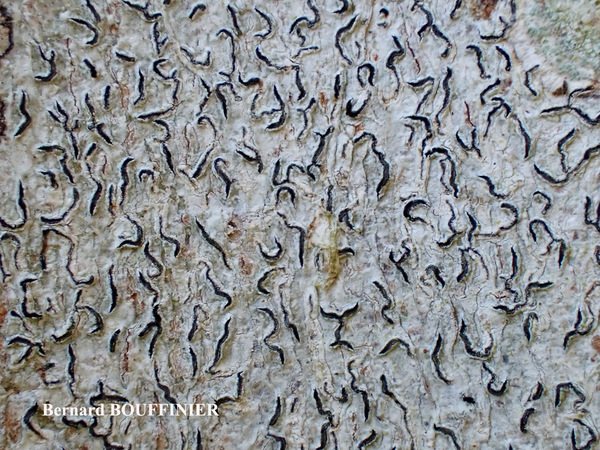
Bernard Bouffinier - Source: http://www.lichensmaritimes.org/index.php?task=fiche&lichen=585&lang=en
France, Roscanvel
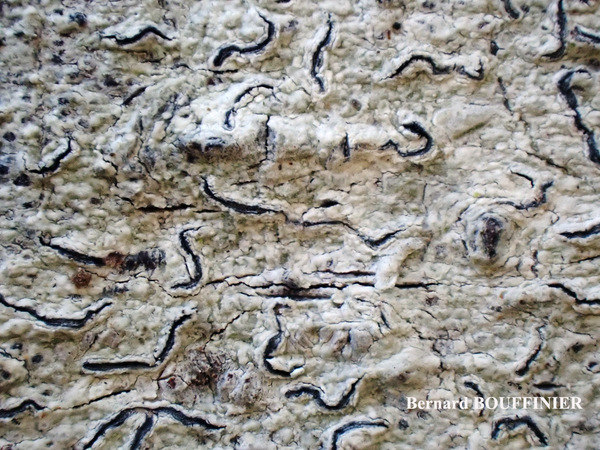
Bernard Bouffinier - Source: http://www.lichensmaritimes.org/index.php?task=fiche&lichen=585&lang=en
France, Roscanvel

Jacques Haine- Source: http://www.lichensmaritimes.org/index.php?task=fiche&lichen=585&lang=en
France, Roscanvel
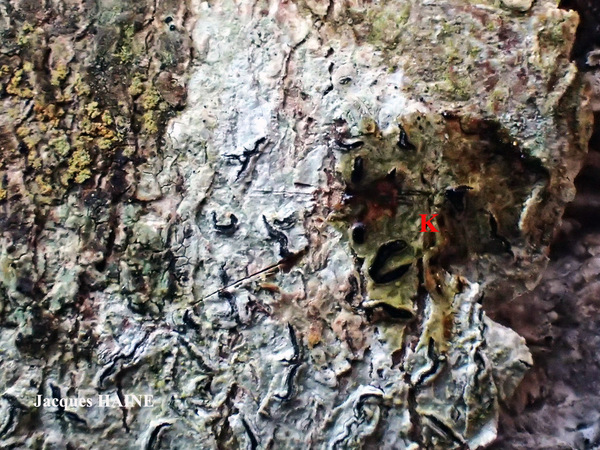
Jacques Haine- Source: http://www.lichensmaritimes.org/index.php?task=fiche&lichen=585&lang=en
France, Roscanvel
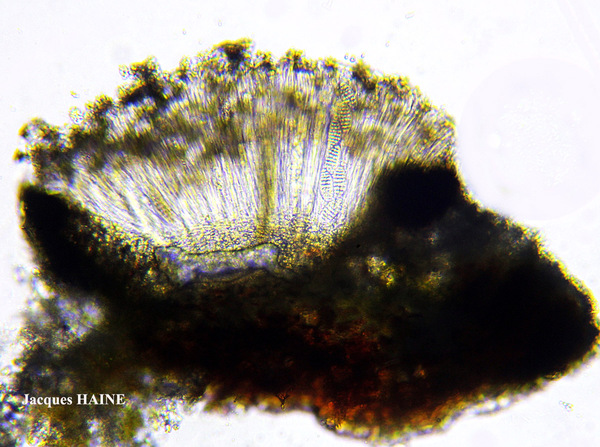
Jacques Haine- Source: http://www.lichensmaritimes.org/index.php?task=fiche&lichen=585&lang=en
France, Roscanvel

Jacques Haine- Source: http://www.lichensmaritimes.org/index.php?task=fiche&lichen=585&lang=en
France, Roscanvel
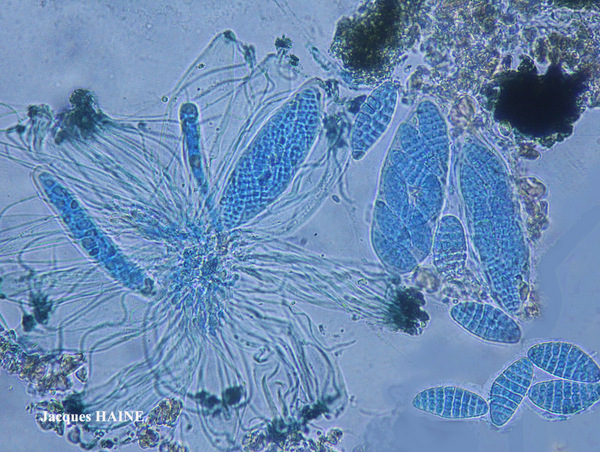
Jacques Haine- Source: http://www.lichensmaritimes.org/index.php?task=fiche&lichen=585&lang=en
France, Roscanvel
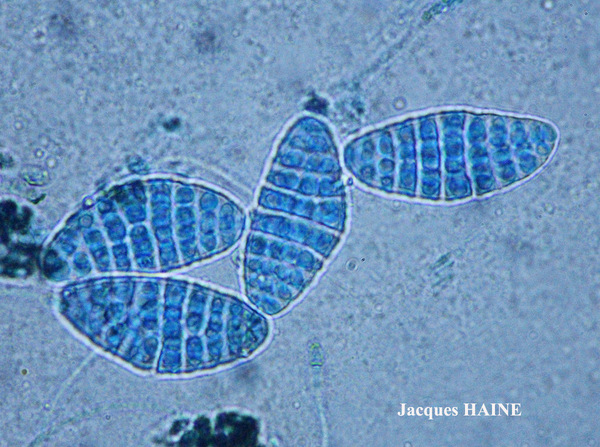
Jacques Haine- Source: http://www.lichensmaritimes.org/index.php?task=fiche&lichen=585&lang=en
France, Roscanvel
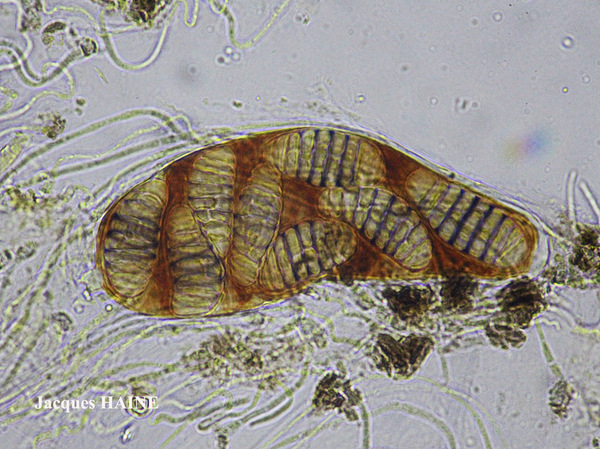
Jacques Haine- Source: http://www.lichensmaritimes.org/index.php?task=fiche&lichen=585&lang=en
France, Roscanvel
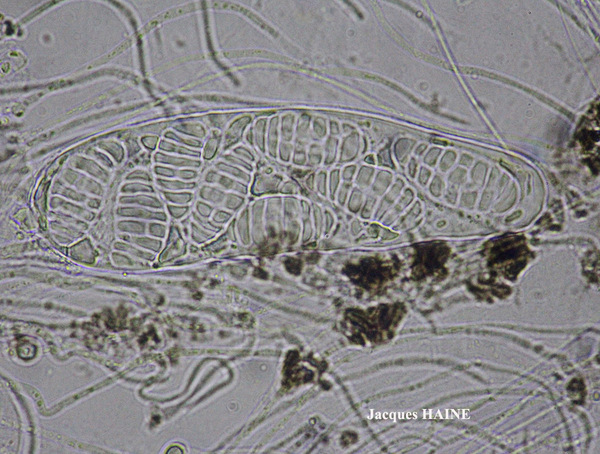
Jacques Haine- Source: http://www.lichensmaritimes.org/index.php?task=fiche&lichen=585&lang=en
France, Roscanvel
Growth form: Crustose
Substrata: bark
Photobiont: Trentepohlia
Reproductive strategy: mainly sexual
Most common in areas with a humid-warm climate (e.g. most of Tyrrenian Italy)
Commonnes-rarity: (info)
Alpine belt: absent
Subalpine belt: absent
Oromediterranean belt: absent
Montane belt: absent
Submediterranean belt: extremely rare
Padanian area: absent
Humid submediterranean belt: absent
Humid mediterranean belt: absent
Dry mediterranean belt: absent

Predictive model

Bernard Bouffinier - Source: http://www.lichensmaritimes.org/index.php?task=fiche&lichen=585&lang=en
France, Roscanvel

Bernard Bouffinier - Source: http://www.lichensmaritimes.org/index.php?task=fiche&lichen=585&lang=en
France, Roscanvel

Bernard Bouffinier - Source: http://www.lichensmaritimes.org/index.php?task=fiche&lichen=585&lang=en
France, Roscanvel

Bernard Bouffinier - Source: http://www.lichensmaritimes.org/index.php?task=fiche&lichen=585&lang=en
France, Roscanvel

Bernard Bouffinier - Source: http://www.lichensmaritimes.org/index.php?task=fiche&lichen=585&lang=en
France, Roscanvel

Jacques Haine- Source: http://www.lichensmaritimes.org/index.php?task=fiche&lichen=585&lang=en
France, Roscanvel

Jacques Haine- Source: http://www.lichensmaritimes.org/index.php?task=fiche&lichen=585&lang=en
France, Roscanvel

Jacques Haine- Source: http://www.lichensmaritimes.org/index.php?task=fiche&lichen=585&lang=en
France, Roscanvel

Jacques Haine- Source: http://www.lichensmaritimes.org/index.php?task=fiche&lichen=585&lang=en
France, Roscanvel

Jacques Haine- Source: http://www.lichensmaritimes.org/index.php?task=fiche&lichen=585&lang=en
France, Roscanvel

Jacques Haine- Source: http://www.lichensmaritimes.org/index.php?task=fiche&lichen=585&lang=en
France, Roscanvel

Jacques Haine- Source: http://www.lichensmaritimes.org/index.php?task=fiche&lichen=585&lang=en
France, Roscanvel

 INDEX FUNGORUM
INDEX FUNGORUM
 GBIF
GBIF
